
The Rouran Khaganate, also known as Ruanruan or Juan-juan was a tribal confederation and later state founded by a people of Proto-Mongolic Donghu origin. The Rouran supreme rulers used the title of "khagan", a popular title borrowed from the Xianbei. The Rouran Khaganate lasted from the late 4th century until the middle 6th century, when they were defeated by a Göktürk rebellion at the peak of their power, which subsequently led to the rise of the Turks in world history.

Amitav Ghosh is an Indian writer. He won the 54th Jnanpith award in 2018, India's highest literary honor. Ghosh's ambitious novels use complex narrative strategies to probe the nature of national and personal identity, particularly of the people of India and South Asia. He has written historical fiction and also written non-fiction works discussing topics such as colonialism and climate change.
Christopher I. Beckwith is an American philologist and distinguished professor in the Department of Central Eurasian Studies at Indiana University Bloomington, Indiana.

The Eurasian nomads were groups of nomadic peoples living throughout the Eurasian Steppe, who are largely known from frontier historical sources from Europe and Asia.
The Silk Road is a number of trade routes across the Eurasian landmass.

Ramachandra "Ram" Guha is an Indian historian, environmentalist, writer and public intellectual whose research interests include social, political, contemporary, environmental and cricket history, and the field of economics. He is an important authority on the history of modern India.
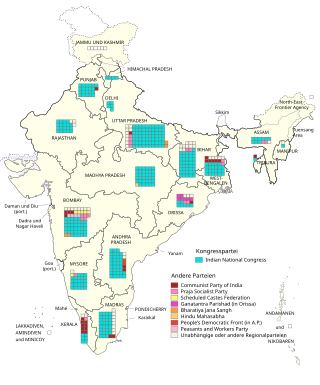
General elections were held in India between 24 February and 9 June 1957, the second elections to the Lok Sabha after independence. Elections to many state legislatures were held simultaneously.
Soumya Bhattacharya is an Indian journalist and author.

Sukumar Sen was an Indian civil servant who was the 1st Chief Election Commissioner of India, serving from 21 March 1950 to 19 December 1958. Under his leadership, the Election Commission successfully administered and oversaw independent India's first two general elections, in 1951–52 and in 1957. He also served as first Chief Election Commissioner in Sudan in 1953.
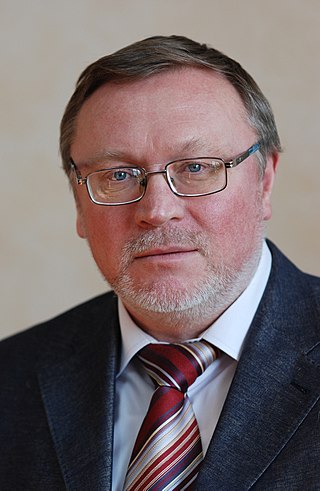
Nikolay Nikolaevich Kradin is a Russian anthropologist and archaeologist. Since 1985 he has been a Research Fellow of the Institute of History, Archaeology and Ethnology, Far East Branch of the Russian Academy of Sciences in Vladivostok. He was Head and Professor of the Department of Social Anthropology in the Far-Eastern National Technical University, and also Head and Professor of the Department of World History, Archaeology and Anthropology in the Far-Eastern Federal University. Corresponding Member of the Russian Academy of Sciences since 2011 and full Member of the Russian Academy of Sciences since 2022.

India After Gandhi: The History of the World's Largest Democracy is a non-fiction book by Indian historian Ramachandra Guha. First published by HarperCollins in August 2007.
Cliodynamics is a transdisciplinary area of research that integrates cultural evolution, economic history/cliometrics, macrosociology, the mathematical modeling of historical processes during the longue durée, and the construction and analysis of historical databases.
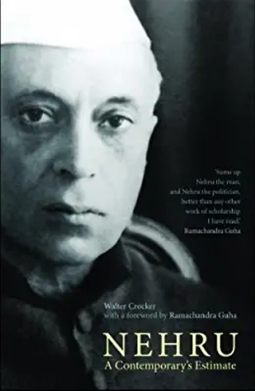
Nehru: A Contemporary's Estimate is a 1966 book written by Walter Crocker and published by Oxford University Press. It is a biography of Jawaharlal Nehru. The book was originally published with a foreword by Arnold Toynbee. It has been reprinted in 2009 by Random House India with a new foreword by Ramachandra Guha.

The Tribal World of Verrier Elwin is an autobiography of anthropologist Verrier Elwin published by Oxford University Press. The book was published posthumously in May 1964, three months after the death of Elwin. It was awarded the Sahitya Akademi Award in 1965.

Peter Frankopan is a British historian, writer, and hotelier. He is a professor of global history at Worcester College, Oxford and the Director of the Oxford Centre for Byzantine Research. He is a fellow of the Royal Asiatic Society. He is best known for his 2015 book The Silk Roads.

The Darkening Age: The Christian Destruction of the Classical World is a 2017 book by Catherine Nixey. In the book, Nixey argues that early Christians deliberately destroyed classical Greek and Roman cultures and contributed to the loss of classical knowledge. The book was an international bestseller, was translated into 12 languages and was a New York Times Notable Book of 2018. The New York Times called it a “ballista-bolt of a book”. The book received positive reviews from academics such as Peter Frankopan, professor of Global History at Oxford University, Tim Whitmarsh, professor of Greek culture at Cambridge University, and others who praised its style and originality. It received criticism from some scholars of late antiquity and the Middle Ages, who accused it of telling a simplistic, polemical narrative and exaggerating the extent to which early Christians suppressed aspects of older Greek and Roman cultures.
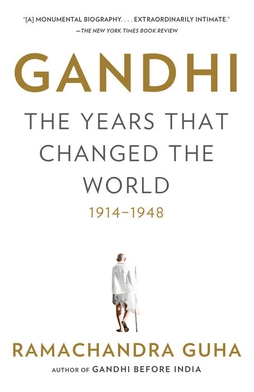
Gandhi: The Years That Changed the World, 1914-1948 is a non-fiction book by Indian historian Ramachandra Guha published by Penguin Random House in September 2018. One of the most extensive biography on the sole icon of the Indian independence movement Mahatma Gandhi, it has garnered wide recognition and accolades. The book runs in excess of 1100 pages. It is a standalone sequel of the 2013 book Gandhi Before India.
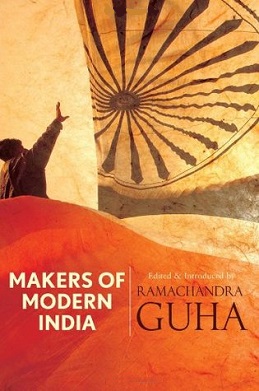
Makers of Modern India is a non-fiction book written by Indian historian-scholar Ramachandra Guha and published by Penguin India in 2010. The book features profiles of selected personalities that laid the foundation of modern India: Ram Mohan Roy, Syed Ahmad Khan, Khuda Bakhsh, Jotirao Phule, Gopal Krishna Gokhale, Bal Gangadhar Tilak, Tarabai Shinde, Mahatma Gandhi, Rabindranath Tagore, B. R. Ambedkar, Mohammad Ali Jinnah, Periyar, Kamala Devi Chattopadhyay, Jawaharlal Nehru, M. S. Golwalkar, Rammanohar Lohia, Jayaprakash Narayan, C. Rajagopalachari, Verrier Elwin, and Hamid Dalwai.
The Earth Transformed: An Untold History is a 2023 non-fiction book by English historian Peter Frankopan. It discusses the interactions between human societies and the environment throughout history.
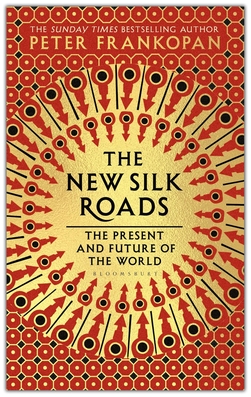
The New Silk Roads: The Present and Future of The World is a 2018 non-fiction book by English historian Peter Frankopan. The full text is divided into 5 chapters. The author discusses the recent rise of Asia's economic and geopolitical strength.















